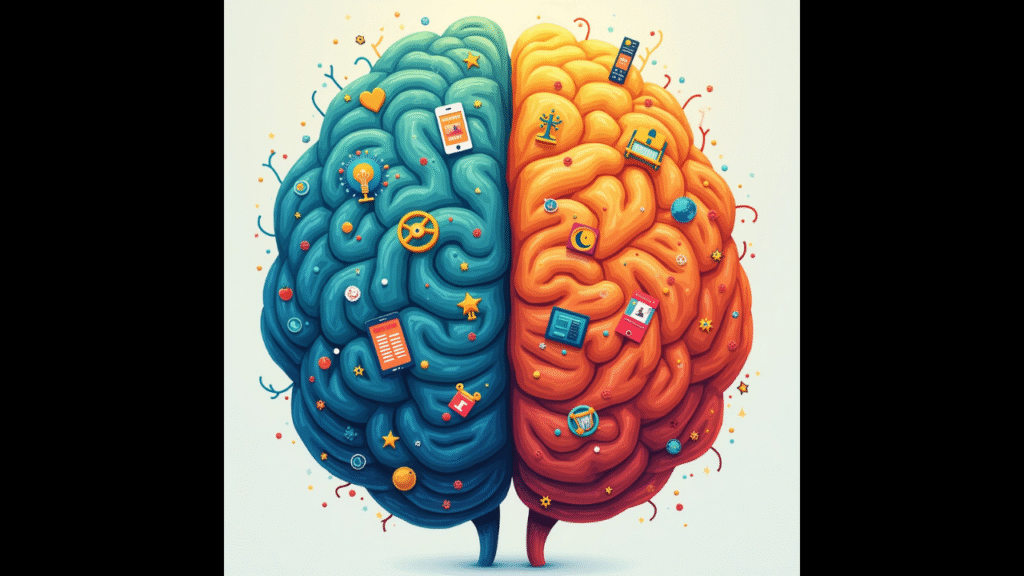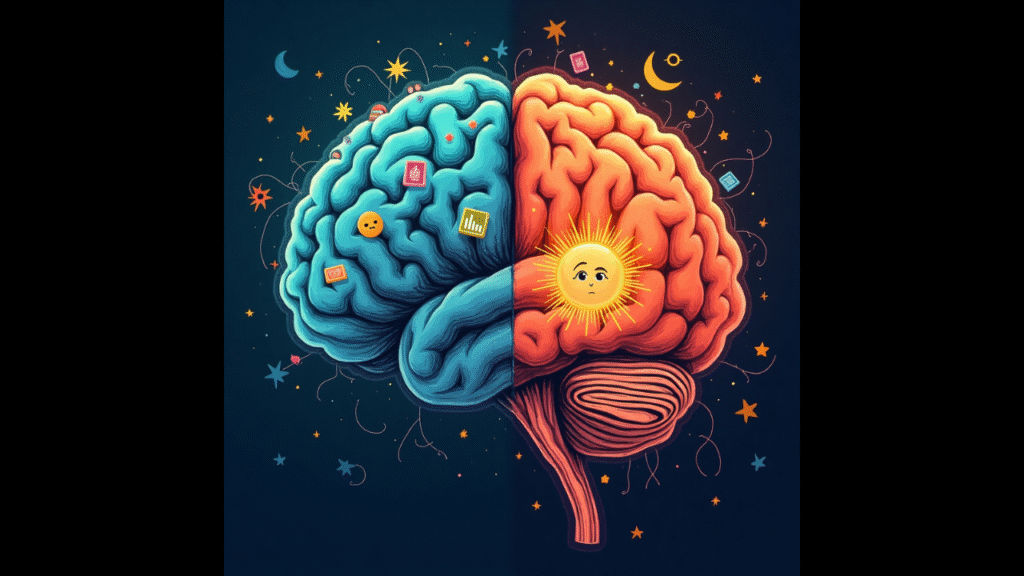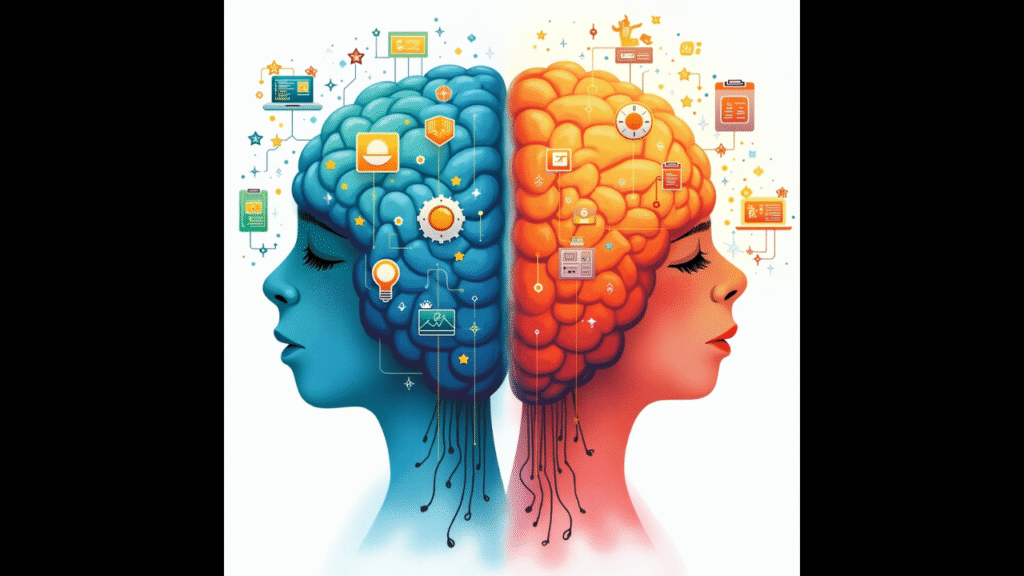In today’s tech-driven world, gadgets have become an everyday companion for kids. From toddlers swiping smartphones to teenagers spending hours on gaming consoles, technology is deeply woven into childhood. This raises an important concern: how does screen time and developing minds interact? Parents are increasingly worried about the effects of gadgets on children’s brain, questioning whether screens are helping or harming development.
The reality lies somewhere in between—gadgets can enhance learning and creativity, but too much exposure may disrupt attention, emotions, and even health. In this blog, we’ll explore how screen time and developing minds connect, highlighting both the benefits and risks of gadgets for children.
Kids Growing Up Surrounded by Gadgets
Not long ago, playtime meant climbing trees, riding bikes, or playing board games. Today, it’s more common to see children entertained by YouTube, games, and apps. Studies reveal that children between 8 to 18 years spend more than 7 hours daily on digital media. With so much exposure, it’s important to understand the effects of gadgets on children's brain during these critical years of growth.

How Gadgets Affect Brain Development
The brain develops most rapidly in childhood, forming neural connections that impact learning, memory, and social behavior. Overexposure to screens can change how the brain processes information.
- Cognitive Growth: Gadgets can improve problem-solving and visual learning, but excessive use may reduce focus and analytical thinking.
- Attention Span: Quick rewards from screens can train children to seek instant gratification, shortening attention span.
- Emotional Skills: Limited face-to-face interaction can make it harder for kids to develop empathy and social understanding.
This balance of pros and cons highlights why parents need to monitor the effects of gadgets on children‘s brain closely.
Positive Effects of Gadgets on Children
Gadgets are not purely harmful—they can also be powerful tools for learning and creativity when used wisely.
- Educational Apps & Games: Interactive platforms make subjects like math, reading, and science fun and engaging.
- Creativity Boost: Digital drawing, coding apps, and music software encourage creative expression.
- Global Communication: Video calls help children stay connected with friends and family, boosting confidence.
- Digital Skills: Growing up with gadgets prepares kids for the digital workplace of the future.
So, the effects of gadgets on children's brain can be positive if screen time is limited and purposeful.
Negative Effects of Excessive Screen Time
Problems occur when gadget use goes unchecked. Overuse can negatively impact both mental and physical health.
- Reduced Concentration
Overexposure to fast-paced games and videos shortens attention span, making schoolwork more difficult. This is one of the most worrying effects of gadgets on children's brain. - Sleep Problems
Blue light from screens disrupts melatonin, delaying sleep. Poor rest affects memory and mood. - Digital Dependency
Many children become addicted to gadgets, showing irritability or tantrums when devices are removed. - Weaker Social Interaction
Spending too much time on gadgets reduces real-life social practice, which is crucial for emotional intelligence. - Delayed Speech & Language
For toddlers, one of the critical effects of gadgets on children's brain is slower speech development, since interaction with people is replaced by screens. - Health Risks
Sedentary behavior leads to obesity, poor posture, and eye strain.

Behavioral Changes Linked to Gadget Use
Parents often notice sudden changes in kids who are overly dependent on screens. These reflect some of the hidden effects of gadgets on children's brain:
- Aggression and Mood Swings: Violent games or overstimulation may increase irritability.
- Need for Instant Rewards: Constant exposure to fast feedback trains kids to avoid patience and effort.
- Emotional Withdrawal: Less interest in family time or outdoor play.
Such changes highlight the importance of managing gadget use before habits become hard to reverse.
Healthy Screen Habits for Children
Balancing the effects of gadgets on children's brain doesn’t mean banning devices completely. Instead, it’s about guiding children toward healthy use.
- Age-Appropriate Guidelines
- Under 2 years: Avoid screen time (except video calls).
- 2–5 years: Up to 1 hour per day of high-quality content.
- 6+ years: Consistent limits and balance with offline activities.
- Screen-Free Zones
Keep devices away from dinner tables and bedrooms. - Outdoor Play & Hobbies
Encourage physical activities, reading, and creative projects to balance screen exposure. - Co-Viewing
Watch content with children and discuss it, so screen time becomes interactive. - Role Modeling
Children copy parents. Reducing your own screen use helps minimize the negative effects of gadgets on children's brain.

Striking the Right Balance
Gadgets are not inherently harmful—they are tools. Like books or TV, their impact depends on how they are used. Parents don’t need to eliminate technology but should encourage mindful, balanced habits.
If managed well, gadgets can enhance creativity, problem-solving, and learning. But if left unchecked, the negative effects of gadgets on children's brain may show up in poor focus, health issues, and weakened social skills.
Final Thought
The digital world is here to stay. As parents, our responsibility is to prepare children for it by teaching balance, discipline, and mindful use. By understanding the effects of gadgets on children's brain and guiding kids wisely, we can help them grow into healthy, confident, and tech-savvy individuals.






